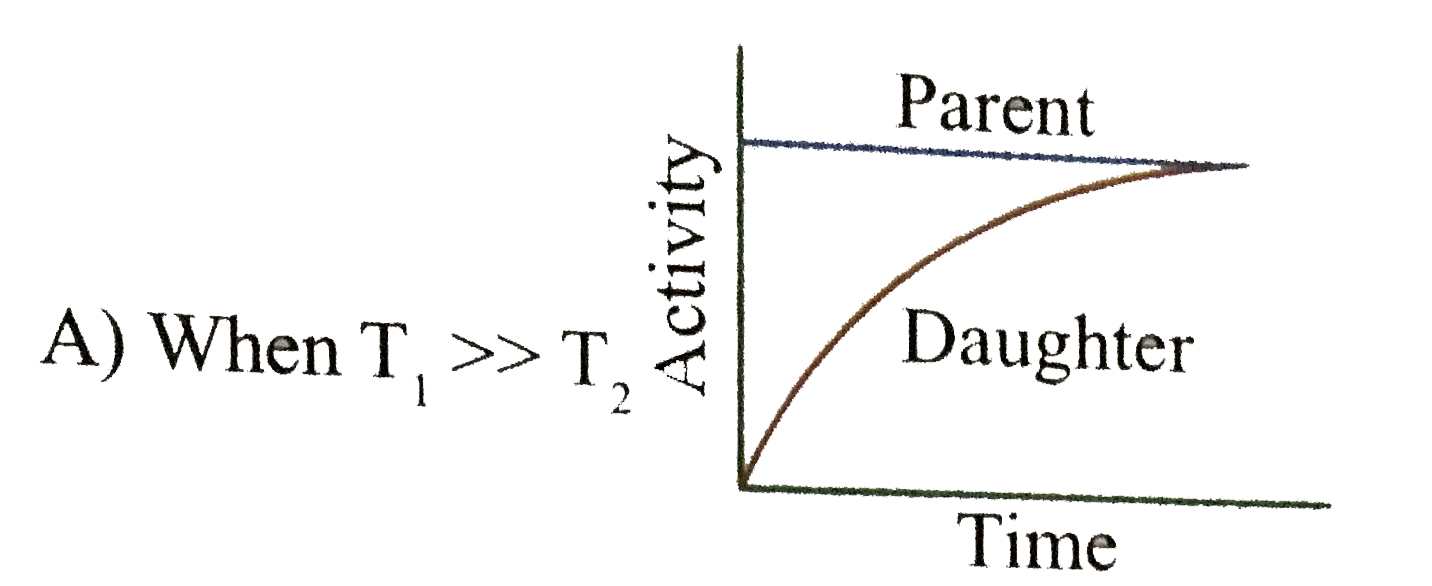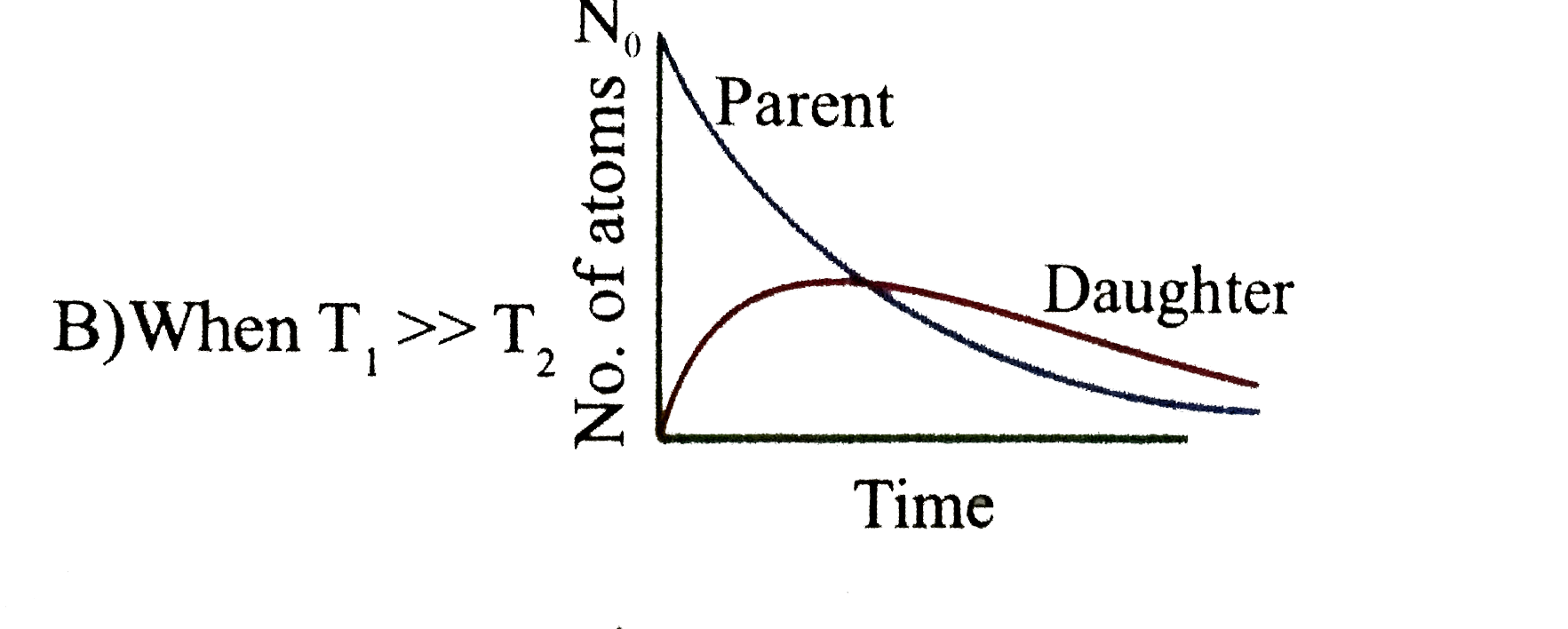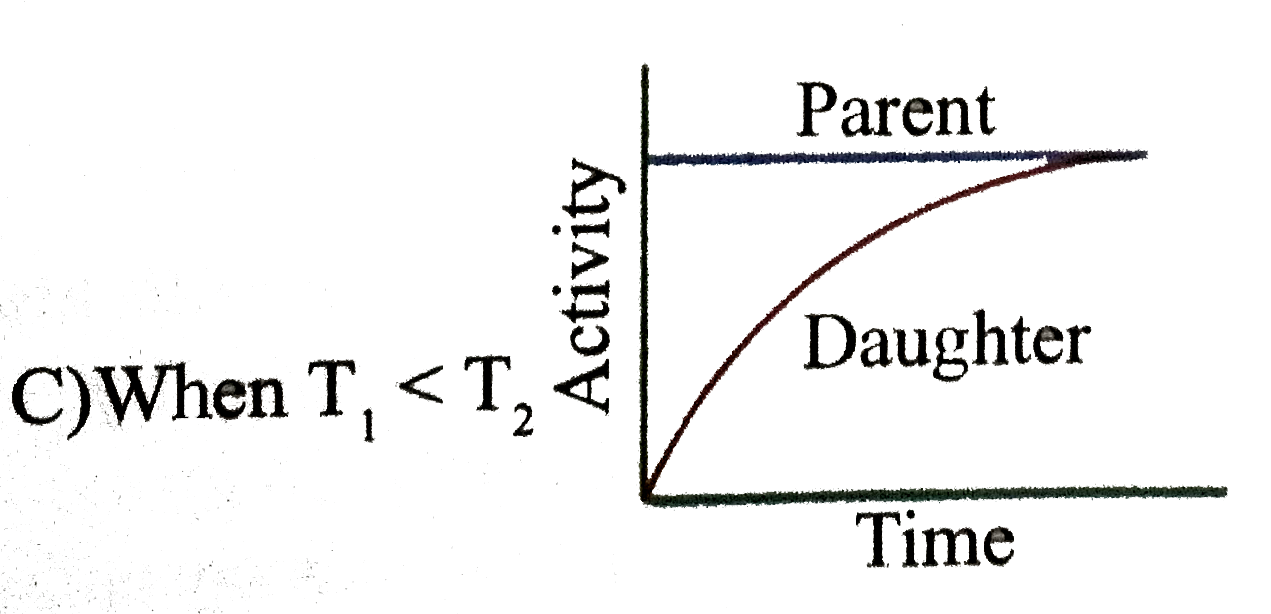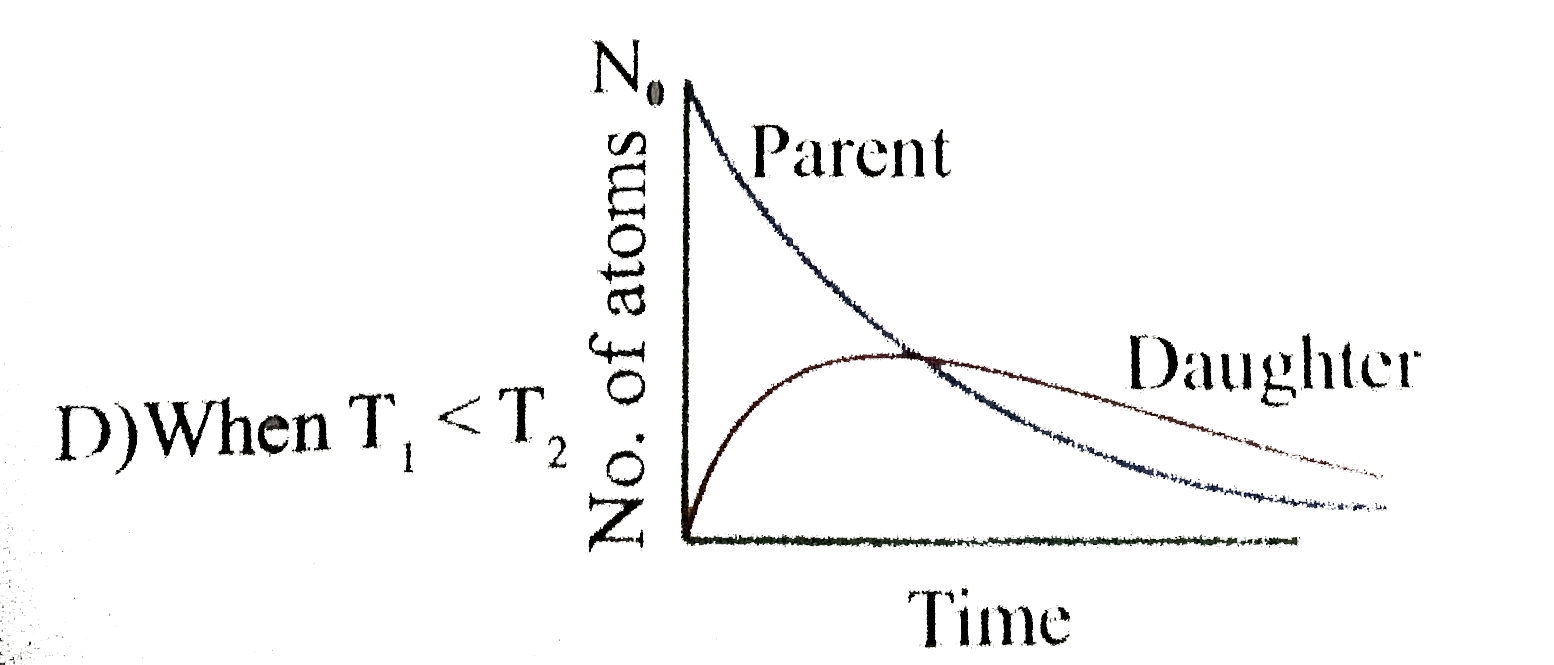A nucleus .A. decays into .b. with half life .T1. and B decays into .C. with half life T2, Graphs are drwan between number of atoms/activity versus time which are as shown, then

BC are correct
ABC are correct
AD are correct
BCD are correct
The correct Answer is:C
Topper's Solved these Questions
- NUCLEAR PHYSICSBOOK - AAKASH SERIESCHAPTER - NUCLEAR PHYSICSEXERCISE - ADDITIONAL PRACTICE LEVEL-II (LECTURE SHEET (ADVANCED)) More than one correct answer Type Questions )
4 Videos
- NUCLEAR PHYSICSBOOK - AAKASH SERIESCHAPTER - NUCLEAR PHYSICSEXERCISE - ADDITIONAL PRACTICE LEVEL-II (LECTURE SHEET (ADVANCED)) Linked Comprehension Type Questions Passage-I :)
2 Videos
- NUCLEAR PHYSICSBOOK - AAKASH SERIESCHAPTER - NUCLEAR PHYSICSEXERCISE - ADDITIONAL PRACTICE EXERCISE (LEVEL-I (MAIN)) (Straight Objective Type Questions)
10 Videos
- MOVING CHARGES AND MAGNETISMBOOK - AAKASH SERIESCHAPTER - MOVING CHARGES AND MAGNETISMEXERCISE - EXERCISE-III
45 Videos
- NUCLEIBOOK - AAKASH SERIESCHAPTER - NUCLEIEXERCISE - Practice Exercise
40 Videos
Similar Questions
Radioactive nucleus A decays into B with half-life 10sec. A also convert into C with half-life 100sec. Find half-life of A for both emission.
View SolutionA radioactive nucleus A with a half life T, decays into nucleus B. At t=0, there is no nucleus B. At some time t, the ratio of the number of B to that of A is 0.3 . Then, t is given by
View Solution
Knowledge Check
A nucleus A (parent) decays into B (Daughter) with half life T1 and B decays into C with half life T2. Graph is drawn between number of atoms/activity versus time. Select the correct graph (s)
A B
B C
C D
D
Radioactive nucleus A decays into B with half-life 10sec. A also convert into C with half-life 100sec. Find half-life of A for both emission.
A6secB9secC3secD2secThe relation between half life period and decay constant is
AT=0.693λBT=0.693λCT=λ0.693Dnone of these
The activity of a nucleus is inversely proportional to its half of average life. Thus, shorter the half life of an element, greater is its radioactivity, i.e., greater the number of atomsd disintegrating per second. The relation between half life and average life is t1/2=0.693λ=τ×0.693
or τ=1.44t1/2
The half life of a radioactive element is 10 years. What percentage of it will decay in 100 years?
View SolutionA radioactive nucleus A with a half life T, decays into a nucleus B. At t = 0, there is no nucleus B. At sometime t, the ratio of the number of B to that of A is 0.3. Then, t is given by :
View SolutionA radioactive nucleus A with a half life T, decays into a nucleus B. At t = 0, there is no nucleus B. At sometime t, the ratio of the number of B to that of A is 0.3. Then, t is given by :
View SolutionThe decay constant of a radioactive sample is λ. Its half -life is T1/2 and mean life is T.
View SolutionThe activity of a nucleus is inversely proportional to its half of average life. Thus, shorter the half life of an element, greater is its radioactivity, i.e., greater the number of atomsd disintegrating per second. The relation between half life and average life is t1/2=0.693λ=τ×0.693
or τ=1.44t1/2
The half life of a radioactive element is 10 years. What percentage of it will decay in 100 years?
View Solution
